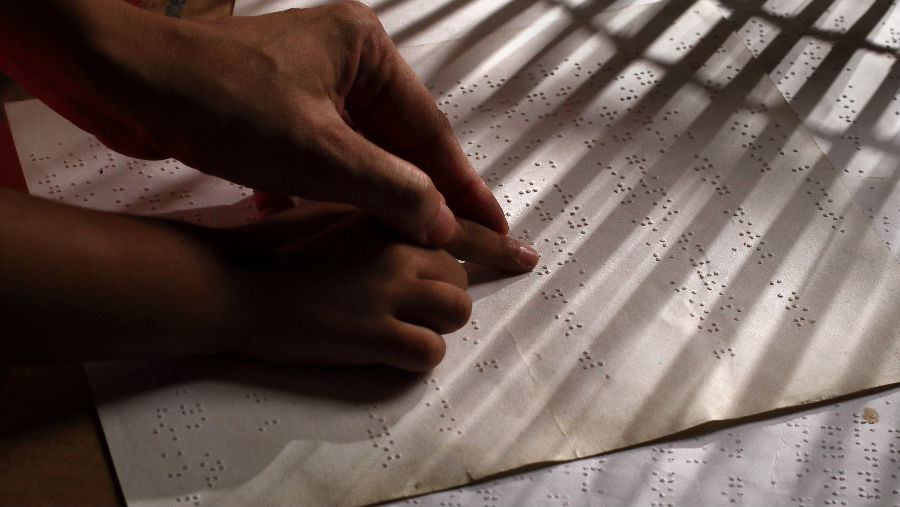Join a powerful, unprecedented alliance for better eye health for all.
Join IAPB-
Choose an alternate language here

2018 will be one of the most exciting years for braille since its invention by Louis Braille almost 200 years ago. The World Blind Union and International Council for Education of People with Visual Impairment (ICEVI) have recently released a piece of software, Easy Converter Express, which will enable teachers and others who work with blind children and adults to produce braille text from digital files with little or no training. The software is free of charge to all, but the very richest countries and it can be downloaded from www.YourDolphin.com/easyconverter-express
The software was developed by the WBU Technology Committee at the request of ICEVI with funding from the Royal National Institute of Blind People (RNIB) of the United Kingdom through a grant from Google.
At the same time, the Orbit 20 refreshable braille display, developed by a consortium of WBU Members, is beginning to emerge in substantial quantities from the factory. This device, which was designed in consultation with the WBU, is a low cost, refreshable braille device which acts as a book reader, a simple note taker and a terminal to tablets, phones and computers. For more information see: http://www.transformingbraille.org/ and www.YourDolphin.com
As we celebrate this year’s World Braille Day, January 4, it is important that we agree how to give braille a new lease of life now that we have overcome many of the technical and financial factors which have made it expensive and hard to obtain. This is also the year when we will also try to secure the future of braille music by adopting a much more co-operative approach to its production and cataloguing.
Braille is still, in spite of a massive increase in audio resources through internet broadcasting, the primary literacy medium for blind people; and we know that the use of braille gives a massive boost to employment opportunities. But if we are to ensure its survival we now have to do two things: we must make sure that braille is available to far more children and adults; and we must ensure that braille producers, no longer limited by the need to make hard copy braille products, produce far more braille titles for use on braille displays. The temptation will be to see expanding access to braille through cheap displays as an add-on to traditional production. But the only way we will be able to afford a rapid expansion of title availability is to cut hard copy production except in those areas, like mathematics and law, where it is essential.
We have the technology for a massive breakthrough; now we need to win the argument about how we maximise it.
World Braille Day is celebrated annually in honour of the birth of Louis Braille, inventor of the reading and writing system used by millions of blind and partially sighted people all over the globe. The Day provides an opportunity to raise awareness about issues facing the blind and the importance of continuing to produce works in braille, providing the blind with access to the same reading and learning opportunities as the sighted.
The World Blind Union believes that reading is a human right. For more information and resources about braille, please visit our resources section of our website at: http://www.worldblindunion.org/English/resources/Pages/Braille-Information.aspx
Photo courtesy: Ysabel Victoriano for #MakeVisionCount photo competition